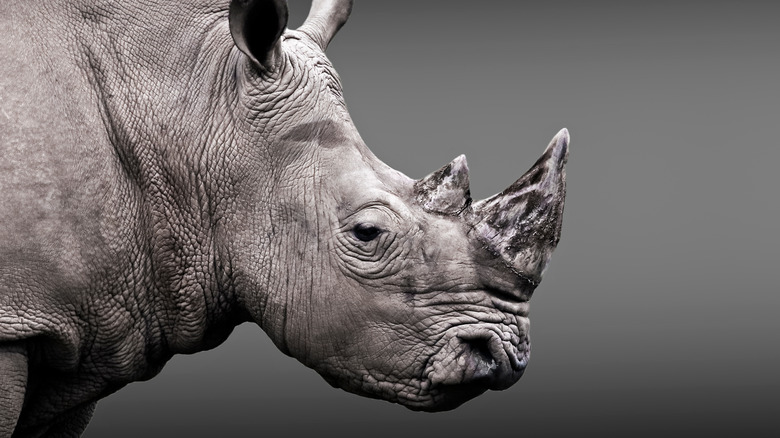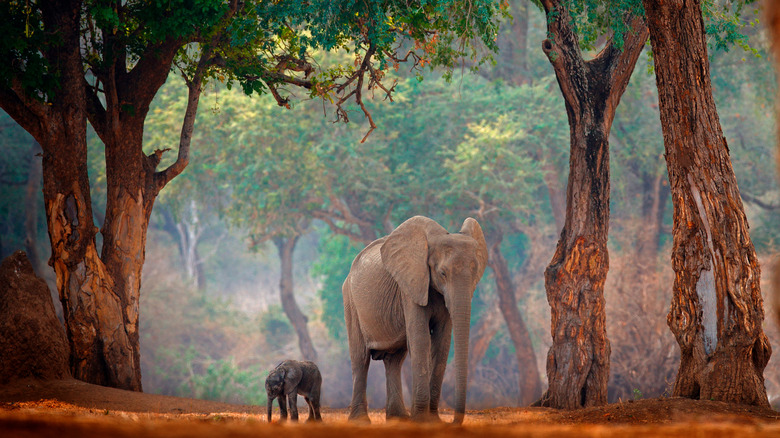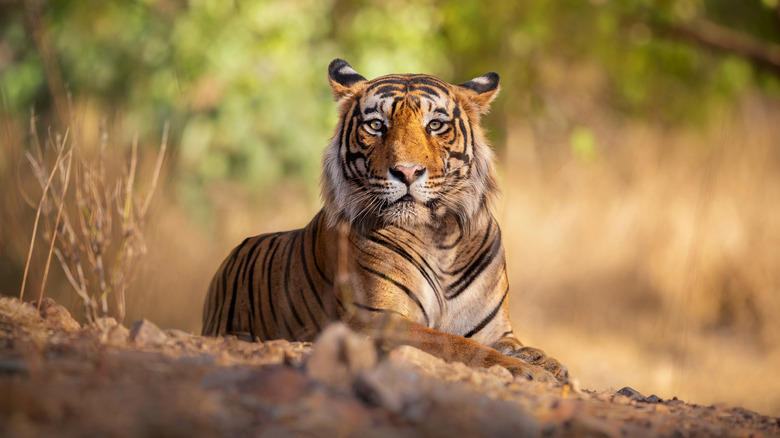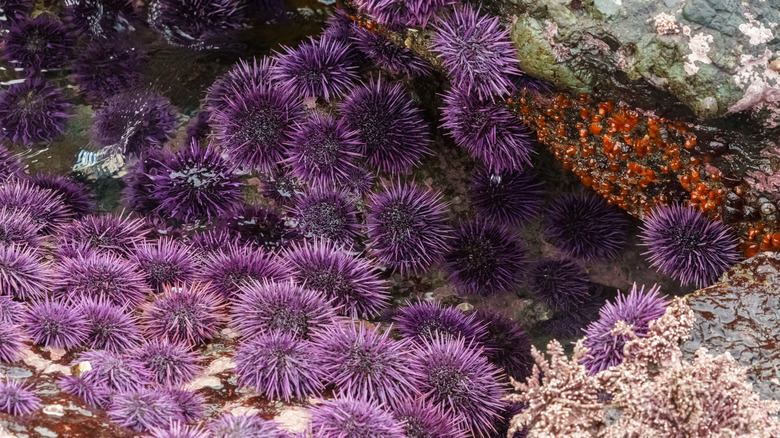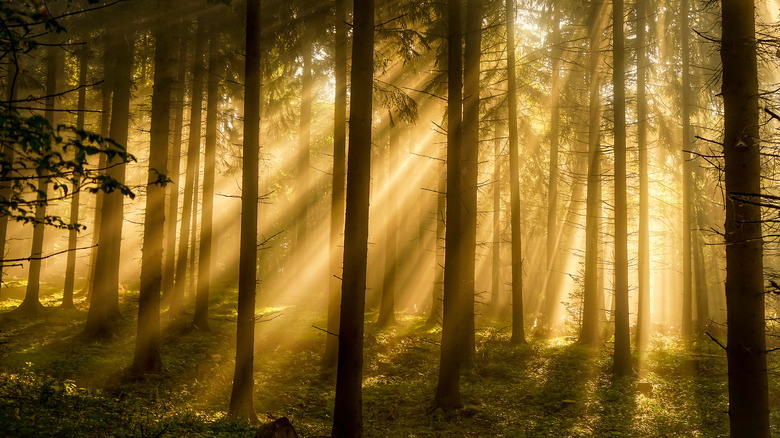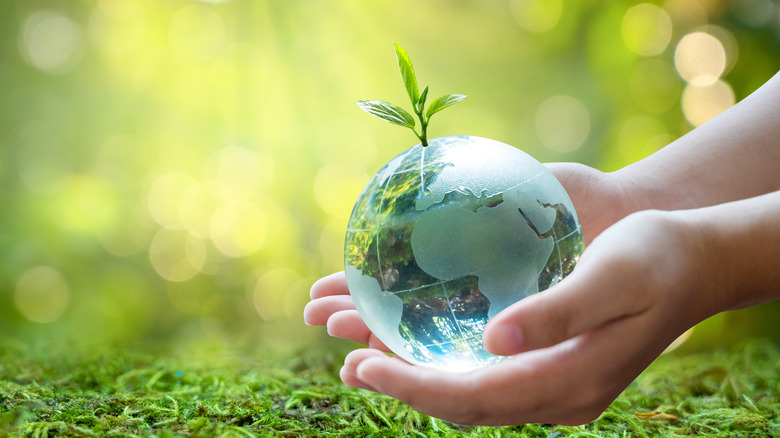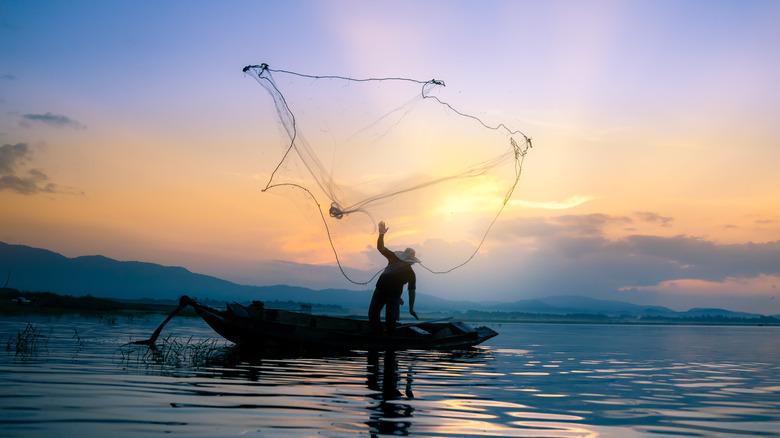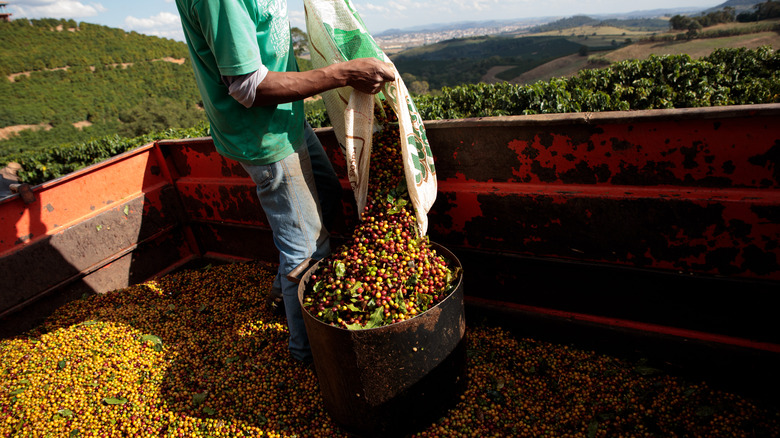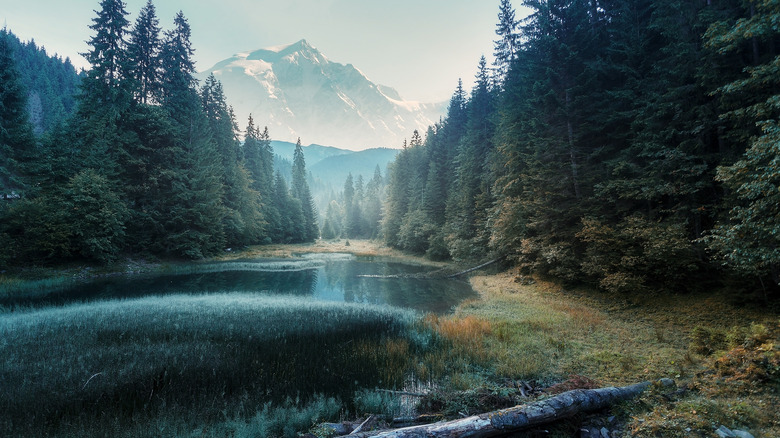How Extinction Affects Everyday Life
It seems like a simple question: How many plant and animal species go extinct every year? Unfortunately, there's no real way to answer that with absolute certainty.
Even the most conservative estimates paint a grim picture: According to Our World in Data, at least 900 different plant and animal species have gone the way of the dinosaurs over the past 500 years. This means that every year, about two species disappear from the face of the Earth forever, their unique traits and roles in nature forever lost to time. Recent studies yielded far more disturbing numbers: Experts at the 2007 U.N. Convention on Biological Diversity stated that the world could actually be losing up to 150 species every day.
For years, the public has heard this simple yet urgent message: Whether they're insects or coral reefs, it's everyone's job to protect all species in danger of getting wiped out, because their loss will have devastating effects on how humans live. And because it's often hard to recognize exactly how people's lives will change when an entire species dies out, here's a look at very real ways extinction becomes a massive blow to humanity's day-to-day existence.
Extinctions cause more extinctions (and ecological problems)
Vox provides a hypothetical scenario: An herbivorous insect goes extinct, and the first to feel the effects of its disappearance are the birds that eat it. However, due to its diet, the insect has another important role in its environment. Its extinction leaves nothing to prevent the overgrowth of the vegetation it used to consume. The plants will eventually sap nutrients from other organisms, including those that produce critical natural resources.
In ecosystems, species don't live in a vacuum. Each fills a specific niche or role, and its sudden disappearance could not only disrupt the natural order of things but also lead to other species dying out. Scientists call the resulting domino effect a co-extinction; in other words, the death of a species means that any other species dependent on it will soon follow (via ScienceDaily). And sooner or later, all other organisms within that ecosystem will feel the effects of the eliminated species' absence. Or, as experts wrote in a 2020 paper, "Extinction breeds extinctions."
A good example (or cautionary tale) is the elephant. According to Columbia Climate School, these enormous pachyderms serve a critical role in their ecosystems by digging water holes, as well as dropping nutrient-rich excrement that not only keeps the soil healthy but also disperses plant seeds far and wide. Losing such a species would mean plants wouldn't be able to reproduce properly, hampering carbon dioxide reduction, endangering humanity's food supply, and even causing diseases to spread faster.
Predator extinctions cause unexpected problems for humans
It's tempting to think that removing a predator from its ecosystem can only mean good things. After all, it's simple math, right? Other species would be free to survive, multiply, and thrive if there's nothing to kill and eat them. Unfortunately, things aren't that simple — and the elimination of an apex predator can bring the entire ecosystem crashing down, thanks to a phenomenon called a trophic cascade (via AccuWeather).
Without the carnivorous hunters in their environment to keep their populations in check, animals that are normally their prey may change their behaviors and cause unforeseen harm. A good example of this was when certain parts of Africa saw a sharp decline in the big cats that often fed on olive baboons (via Smithsonian Magazine). Over time, the primates began associating closely and frequently with humans near their habitat; this led to a surge in cases of intestinal parasite infestation, in both baboons and humans.
According to Columbia Climate School, the near-annihilation of Yellowstone Park's wolves in 1930 caused population spikes in herbivores such as deer and elk. They ended up consuming too much of the vegetation in the area; among the consequences were increased risk of erosion in stream banks, the loss of habitats for songbirds, and the uncontrolled reproduction of mosquitoes and other pests and disease carriers. Sixty-five years later, authorities repopulated the park with wolves; reports say the ecosystem snapped back to the normal order of things like a rubber band.
Global air quality will suffer, causing severe health problems
Unchecked species populations due to predator loss can have some pretty dire consequences for any ecosystem. Perhaps the most serious effect — one that many don't realize — is that extinctions can literally choke humanity.
The disappearance of terrestrial species that spread tree seeds through their feces spells the death of forests (via Vox). When forests die, the overall quality of air on Earth would suffer tremendously, leaving a gap in both oxygen production and carbon sequestration that would greatly diminish man's quality of life (via Tufts Now). The California Center for Occupational Health and Safety lists down some of the serious health effects of high carbon dioxide concentrations in the air: inhibited respiratory function, permanent brain and heart damage, and even death.
The sharp population decline of both sea otters and sunflower starfishes (the former due to excessive hunting and pollution, the latter because of a virus) resulted in an explosion of purple sea urchins in California, as told by NPR. They ended up devouring kelp forests, which serve coastal ecosystems by providing shelter for various organisms, protecting from storm surges, and as means to reduce carbon dioxide in the atmosphere, notes Columbia Climate School. It reached the point where 93% of the kelp forests were lost in just five years. And when kelp forests perish, humans suffer the consequences. Among the most significant ones: decreased air quality leading to serious health problems, as explained in Frontier Scientists.
Fruits and vegetables will become luxury products
Fun fact: Three-fourths of all the food crops in the world, as well as all flowering plants in tropical rainforests, depend in some way or another on animal pollinators, particularly insects (via Columbia Climate School). Remove their pollinators from the equation, and they won't be able to produce fruit and other kinds of plant-based food — and of course, this means trouble for the global food supply. Bees, for instance, are responsible for pollinating a quarter of a million plant species. They're mostly associated with honey, but they also make it possible for apples, almonds, cucumbers, and most of the other 87 food crops to sustain humanity's food needs.
Rhinos also play a surprising role in seed dispersal. Because they like to snack on fruits and plants in a particular place and leave their feces in a different area, they help vegetation grow and spread across various locations, says AccuWeather. Unfortunately, because rhinos have been hunted to critical endangerment, apples, figs, mangoes, and certain berries are at risk of losing their unexpected ally in reproduction.
Another example: fruit bats, which play the role of pollinator for 289 plant types, including specific rainforest flora, according to Columbia Climate School. Meanwhile, other significant insect pollinators such as the monarch butterfly have experienced massive worldwide population decline due to highly toxic pesticides, deteriorating forests, and the ongoing climate crisis, all of which humans have a hand in.
Natural hazards will hit even harder
From a stable climate suitable for living to a reliable line of defense against natural hazards, man's relationship with nature has always revolved more around receiving than giving (via Stanford News). However, as various species inch closer to the brink of extinction, the forests, mangroves, wetlands, kelp forests, and other habitats they populate suffer massive losses. And as Frontier Scientists explains, the continued degradation of these terrestrial and underwater forests lead to destruction brought about by weather disturbances and natural hazards. It's not farfetched to imagine that such a scenario could easily happen, especially at the rate many species are disappearing from the face of the planet.
Mangroves and kelp forests that stabilize marine ecosystems and prevent coastal erosion are under constant threat of human activity, leaving the species that depend on them severely vulnerable. Species that prevent other species from completely overwhelming these ecosystems, such as sea otters, are also declining (via AccuWeather). As The Conversation explains, losing biodiversity "will disrupt these services even further."
And if that doesn't bother you, remember that the 7 billion people depend on the continued survival of these ecosystems in order to live — especially those that live in coastal towns, which are the first to get hit by storms and tsunamis.
The world won't have enough food for everyone
Many seemingly don't realize the full extent of just how dependent humans are on the continued survival of the environment. That said, nature's resources are finite; eventually, humans will have severely drained it of the raw resources they need in order to thrive. With the loss of certain critical species, for instance, a diminished food supply will follow; sooner or later, there simply won't be enough food — fruits, vegetables, meat, and other food products — to feed all the hungry mouths on the planet. Everyone knows about how the loss of bees would mean the loss of honey for the world. Now, imagine that happening to apples or bananas because the species that helped them spread ceased to exist; you'll get a better idea of just how serious this problem is.
Rather ironically, it's the agricultural activities necessary for food production that put the very systems humans depend on for sustenance at risk, according to a study reported by Nature. It even goes on to compare man's agricultural impact to climate change's devastating effects, saying that both pose equal levels of danger to the planet's various species. Stanford biologist Paul Ehrlich said it best: "When humanity exterminates populations and species of other creatures, it is sawing off the limb on which it is sitting, destroying working parts of our own life-support system."
Some drugs won't be available anymore
Across the centuries, humans have found various remedies and medical resources in the most unexpected places in nature. Take the story of erythromycin, for instance. A Filipino doctor found the bacteria from which this compound was isolated in the soil of his native province; now, this powerful antibiotic eases the suffering of patients with bacterial infections, particularly those who can't take penicillin (via FlipScience). Speaking of penicillin, scientists discovered and processed it from a fungus; it's among the 25% or more of all prescription medications with plant- or animal-derived components (via Columbia Climate School).
Medical advancements may even stem from seemingly dangerous sources, like how studying deadly poison dart frog toxins — which are powerful enough to kill buffalos and other large animals — has clued scientists in on a possible way to relieve long-term pain (via the American Chemistry Council). Imagine what would happen, then, if these species were to die out: Years of research down the drain, along with hundreds or even thousands of important types of medicine.
Whether it's a possible cure for neurological diseases from tarantula venom, solutions to kidney problems from hibernating bears' blood toxins, or a potential cancer-killer from snail bacteria, it's clear that losing species, especially those that are not yet known to science, can forever prevent humans from accessing live-saving knowledge and raw medical materials.
There will be more disease outbreaks and pandemics
The connection between humans messing with nature and the spread of diseases isn't that hard to see, especially since it has been used as a plot point in numerous works of popular culture. Man's interference has been depicted as the reason behind disease transmission, whether via lab accidents or contact with disease vectors. After all, infectious disease transmissions in the real world have been the result of humans hunting wild animals for food and invading their habitats (via Stanford News). A 2015 study identified 34 genera of parasites and bacteria from pangolins, which are said to be the most trafficked mammal in the world.
What may come as a surprise to some, however, is the relationship between species extinction and the spread of disease — and while not immediately obvious, the connection certainly is quite strong. As ecologist Felicia Keesing explains via an article in Scientific American, disease-causing agents such as fungi, viruses, and bacteria tend to get passed on more easily as certain "buffer" species suffer extinction. Due to deforestation, the United States has seen a decline in opossum populations. And because ticks that carry Lyme disease don't thrive as well on them, the parasites found a new home in the mice that the marsupials co-exist with, thereby increasing the chances of transmission to humans as more forest areas get torn down in favor of building more offices and residential areas.
Many people will lose their jobs
Naturally, with the disappearance of certain animal species, various opportunities to earn a living will also vanish. Perhaps the most obvious example would be honey. As the Columbia Climate School reports, the global honey trade is a giant industry with an annual worth of $50 billion. And with the world's bee populations suffering massive losses, the commodity they are best known for is also at risk.
Man would also do well to learn from history. Starting from the late 15th century, Atlantic cod fishing in Newfoundland, Canada, became an economic cornerstone — that is, until overfishing and poor resource management caused the fisheries to collapse. This greatly affected fishermen in the region, who suddenly found themselves without a source of income.
Interestingly, man's actions towards habitat expansion and increased production are contributing to the steady loss of resources and livelihoods. For instance, the decline in populations of pollinators such as bees and monarch butterflies can be attributed to an increased use of pesticides meant to kill pests; after all, these insect-killing chemicals don't exactly discriminate (via Tufts Now).
You won't be able to buy coffee, chocolate, and your other favorites
In 2019, the Intergovernmental Science-Policy Platform on Biodiversity and Ecosystem Services (IPBES) reported that man has "significantly altered" three-fourths of the world's land areas and two-thirds of its oceans, all in the name of increasing food production. In addition, agriculture-related activities turned out to be massive sources of greenhouse gases, with the conversion of forest areas into agricultural land and fertilizer use making up 25% of global emissions.
This never-ending exploitation of natural resources is bound to take a massive toll, though, and the global economy will feel it. The same IPBES report places the potential loss in annual global crops at a staggering $577 billion, due to the declining populations of animal and insect pollinators (via Stanford University). Considering how crop pollinators in the U.S. alone have an annual worth of about $10 billion, this is hardly surprising (via the United States Department of Agriculture). Meanwhile, the global honey, coffee, and chocolate markets are respectively valued at $9.21 billion, $102.02 billion, and $208.15 billion — and all of these industries rely heavily on species teetering on the edge of extinction.
With all these in mind, it's easy to understand why many businesses would close and millions would lose their jobs once critical species are lost forever. Overall, the world is on track to lose about a fifth of its economic output within the next three decades because of biodiversity loss, according to Columbia Climate School.
Hungry, poor, and homeless? Things will get worse
While it's the steady march of capitalist interests that is considerably fueling biodiversity loss, it's not the rich who will be the first to feel the severe effects of species extinction.
According to the United Nations' analysis, some of the most impoverished communities in the world, as well as Indigenous tribes who have acted as unofficial caretakers of nature throughout the years, live in the same areas that are under grave threat of species extinctions and ecosystem damage (via Stanford University). The planet is projected to lose nearly a fifth of its species due to manmade climate change, significantly hampering initiatives to combat poverty and facilitate sustainable development in different parts of the world, according to Nature. From the disappearance of marine organisms affecting fishermen's catches to the loss of coral reefs and kelp forests resulting in coastal communities losing their homes, it's not hard to see how rapid species extinctions can be particularly devastating to the most needy members of society.
As it turns out, however, the world's conservationists could actually learn a thing or two from the very same Indigenous folk whose lives would be jeopardized by biodiversity loss. As Scientific American reports, one example is their technique of letting wild and domestic species coexist in their gardens, resulting in species-rich ecosystems that are a far cry from agricultural land filled with nothing but crops.
The world won't be as beautiful - and it never will be again
According to current scientific knowledge, it is not possible to fully restore a "pure" species from extinction (via INPST). Lost species are lost forever, period. With that in mind, it's almost painful to think about the countless types of plants and animals that science will never know, simply because they went extinct before humans could even find out about them.
And while extinction has occurred in nature sans human interference for millions of years, it's disheartening to know that man's actions have accelerated worldwide extinction rates thousands of times (via Vox). In fact, the human race has transformed into a dominant force for species extermination all on its own, from the endless exploitation of Earth's natural resources to irresponsible waste disposal.
However, the quest to save Earth's species from extinction shouldn't be based solely on their quantifiable impact. As avian ecology professor Michael Reed stated in an interview with Tufts Now, "Biodiversity is also just good for human well-being. It makes you feel better about the world when nature is there, when you can see it and enjoy it." Man can survive in a world without butterflies, bees, or birds singing in trees — but it will be a darker, gloomier existence, in a place that pales in comparison to the brighter world of today.
